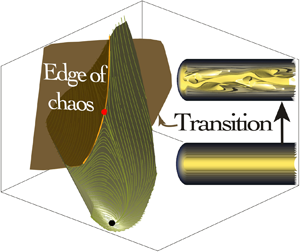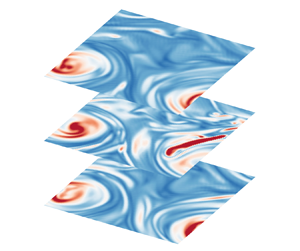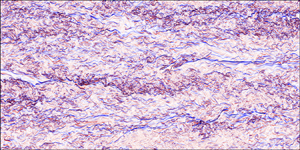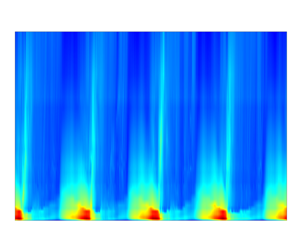Refine listing
Actions for selected content:
1416829 results in Open Access
Synthesis and characterization of nano-silica from locally available laterite clay
-
- Journal:
- Clay Minerals / Volume 58 / Issue 4 / December 2023
- Published online by Cambridge University Press:
- 12 March 2024, pp. 408-414
-
- Article
- Export citation
Life on the edge: subcritical pipe flow transition as a spectral submanifold
-
- Journal:
- Journal of Fluid Mechanics / Volume 983 / 25 March 2024
- Published online by Cambridge University Press:
- 12 March 2024, F1
-
- Article
-
- You have access
- HTML
- Export citation
The conditional Lyapunov exponents and synchronisation of rotating turbulent flows
-
- Journal:
- Journal of Fluid Mechanics / Volume 983 / 25 March 2024
- Published online by Cambridge University Press:
- 12 March 2024, A1
-
- Article
-
- You have access
- Open access
- HTML
- Export citation
The Reasonable Content of Conscience in Public Bioethics
-
- Journal:
- Cambridge Quarterly of Healthcare Ethics / Volume 34 / Issue 1 / January 2025
- Published online by Cambridge University Press:
- 12 March 2024, pp. 36-48
-
- Article
-
- You have access
- Open access
- HTML
- Export citation
Prandtl number effects on extreme mixing events in forced stratified turbulence
-
- Journal:
- Journal of Fluid Mechanics / Volume 983 / 25 March 2024
- Published online by Cambridge University Press:
- 12 March 2024, R1
-
- Article
-
- You have access
- Open access
- HTML
- Export citation
Modelling the unsteady lift of a pitching NACA 0018 aerofoil using state-space neural networks
-
- Journal:
- Journal of Fluid Mechanics / Volume 983 / 25 March 2024
- Published online by Cambridge University Press:
- 12 March 2024, A8
-
- Article
-
- You have access
- Open access
- HTML
- Export citation
Amanda Luyster, ed. Bringing the Holy Land Home: The Crusades, Chertsey Abbey, and the Reconstruction of a Medieval Masterpiece Studies in Medieval and Early Renaissance Art History. New York: Harvey Miller, 2023. Pp. 376. $125.00 (cloth).
-
- Journal:
- Journal of British Studies / Volume 63 / Issue 2 / April 2024
- Published online by Cambridge University Press:
- 12 March 2024, pp. 456-458
-
- Article
- Export citation
MOR volume 20 issue 1 Cover and Front matter
-
- Journal:
- Management and Organization Review / Volume 20 / Issue 1 / February 2024
- Published online by Cambridge University Press:
- 12 March 2024, pp. f1-f3
-
- Article
-
- You have access
- Export citation
Rhythm in the Kingdom: a variationist analysis of speech rhythm in Tongan English
-
- Journal:
- English Language & Linguistics / Volume 28 / Issue 2 / June 2024
- Published online by Cambridge University Press:
- 12 March 2024, pp. 203-225
-
- Article
- Export citation
Mental health of heterosexual women married to homosexual men: a major but neglected issue
-
- Journal:
- The British Journal of Psychiatry / Volume 224 / Issue 4 / April 2024
- Published online by Cambridge University Press:
- 12 March 2024, p. 139
- Print publication:
- April 2024
-
- Article
-
- You have access
- HTML
- Export citation
Neuropsychology of Depression Edited by Shawn M. McClintock and Jimmy Choi Guilford Press. 2022. £62.99 (hb). 464 pp. ISBN 9781462549276
-
- Journal:
- The British Journal of Psychiatry / Volume 224 / Issue 4 / April 2024
- Published online by Cambridge University Press:
- 12 March 2024, p. 140
- Print publication:
- April 2024
-
- Article
-
- You have access
- HTML
- Export citation
Augustine M. Reisenauer, Augustine's Theology of the Resurrection (Cambridge: CUP, 2023), pp. xvi + 275. £85.00/$110.00
-
- Journal:
- Scottish Journal of Theology / Volume 77 / Issue 3 / August 2024
- Published online by Cambridge University Press:
- 12 March 2024, pp. 309-310
- Print publication:
- August 2024
-
- Article
- Export citation
Dimension in team semantics
-
- Journal:
- Mathematical Structures in Computer Science / Volume 34 / Issue 5 / May 2024
- Published online by Cambridge University Press:
- 12 March 2024, pp. 410-454
-
- Article
- Export citation
W. Trent Foley. Bede and the Beginnings of English Racism Studia Traditionis Theologiae: Explorations in Early and Medieval Theology 49. Turnhout: Brepols, 2022. Pp. 221. $82.00 (paper).
-
- Journal:
- Journal of British Studies / Volume 63 / Issue 2 / April 2024
- Published online by Cambridge University Press:
- 12 March 2024, pp. 443-444
-
- Article
- Export citation
On the development and analysis of coupled surface–subsurface models of catchments. Part 3. Analytical solutions and scaling laws
-
- Journal:
- Journal of Fluid Mechanics / Volume 982 / 10 March 2024
- Published online by Cambridge University Press:
- 12 March 2024, A30
-
- Article
-
- You have access
- Open access
- HTML
- Export citation
A new MIS 5 to MIS 2 speleothem record from Sandkraal Cave on the South African Cape south coast
-
- Journal:
- Quaternary Research / Volume 118 / March 2024
- Published online by Cambridge University Press:
- 12 March 2024, pp. 142-161
-
- Article
-
- You have access
- Open access
- HTML
- Export citation
Heather Madar. Albrecht Dürer and the Depiction of Cultural Differences in Renaissance Europe New York: Routledge, 2023. Pp. 186.
-
- Journal:
- Austrian History Yearbook / Volume 56 / May 2025
- Published online by Cambridge University Press:
- 11 March 2024, pp. 213-214
- Print publication:
- May 2025
-
- Article
- Export citation
Reconceiving Christianity and the Modern Prison: On Evangelicalism’s Eugenic Logic and Mass Incarceration
-
- Journal:
- Journal of Law and Religion / Volume 39 / Issue 1 / January 2024
- Published online by Cambridge University Press:
- 11 March 2024, pp. 85-115
-
- Article
-
- You have access
- Open access
- HTML
- Export citation
Ukraine’s Unnamed War: Before the Russian Invasion of 2022. By Dominique Arel and Jesse Driscoll. Cambridge: Cambridge University Press, 2023. 273p. $34.99 paper. - The Zelensky Effect. By Olga Onuch and Henry E. Hale. Oxford: Oxford University Press, 2023. 404p. $24.95 cloth.
-
- Journal:
- Perspectives on Politics / Volume 22 / Issue 3 / September 2024
- Published online by Cambridge University Press:
- 11 March 2024, pp. 933-934
- Print publication:
- September 2024
-
- Article
- Export citation
Public Reason, Bioethics, and Public Policy: A Seductive Delusion or Ambitious Aspiration?
-
- Journal:
- Cambridge Quarterly of Healthcare Ethics / Volume 34 / Issue 1 / January 2025
- Published online by Cambridge University Press:
- 11 March 2024, pp. 10-24
-
- Article
-
- You have access
- Open access
- HTML
- Export citation





































